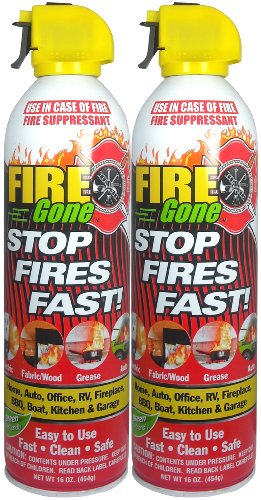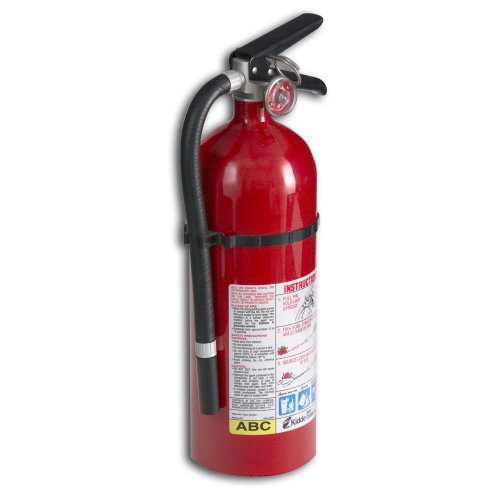Fire Extinguisher varieties
Water is one in every of the foremost economical asphyxiator varieties. they ought to solely be used on category A fires together with Paper, wood, fabrics, furniture, etc.
A water asphyxiator is solid red in color with a hose and nozzle connected, therefore you'll be able to direct a stream of water at rock bottom of the fireplace. As water conducts electricity, water hearth extinguishers should not be used close to exposed to measure electricity cables. Water asphyxiators ar best unbroken aboard a CO2 extinguisher that the risk of electrical fires is roofed in your building. Water extinguishers work by quenching the flames and soaking (cooling) the materials within the hearth.
As with water, AFFF foam works on category A fires however also can extinguish category B / combustible liquid fires. once sprayed onto a hearth, AFFF foam extinguishes and smothers the flames, then seals in any dangerous vapours below the surface of froth. Foam conjointly penetrates porous materials and cools the fireplace because the water within the foam evaporates. because the foam asphyxiator is non-conductive and tested to the SB EN3 thirty five,000V material check, they will be used close to however not on live electrical instrumentation. Foam hearth extinguishers will be distinguished by their cream color coded panel.
Carbon dioxide or CO2 hearth extinguishers ar safe to use on electrical fires. The CO2 gas is non-conductive and doesn't leave a residue behind that may result the long run performance of electrical instrumentation in contrast to foam or powder extinguishers. These asphyxiator varieties are effective on category B fires (flammable liquids). CO2 hearth asphyxiators ar distinguished by a black panel on the extinguisher body and by their horn that is to be pointed at the fireplace however not control just in case of a freeze burn. Some newer CO2 asphyxiator varieties have frost free horns as a new feature. the foremost frequent device combine for economical hearth fighting could be a water or foam aboard a CO2 extinguisher.
Dry powder devices ar the foremost versatile hearth extinguisher varieties and ar ready to extinguish combustible solids, liquids, gasses and electrical fires. These ar usually suggested to be used on vehicles and within the home, however though they're multi purpose, powder hearth extinguishers don't seem to be suggested to be used in surrounded areas, or on sensitive electrical instrumentation if alternative a lot of appropriate varieties of asphyxiator ar on the market. Powder hearth extinguishers will be distinguished by their blue panel, and work by breathless the fireplace and preventing re-ignition
Wet chemical hearth extinguishers are designed specifically for quenching deep fat preparation fires. (Class F fires). Before the creation of wet chemical extinguishers, most industrial kitchens had foam or powder extinguishers, but traditional asphyxiator varieties like these will worsen a preparation fat hearth as they can't lower the temperature of oil risking re-ignition, and may build hot oil splash au fait contact with the quenching agent.
When operated, a wet chemical asphyxiator cools the flames and fat, and smothers the recent fat to stop re-ignition. A wet chemical asphyxiator features a yellow panel on its body and an extended lance accustomed safely distribute the quenching agent at a distance. This specialist asphyxiator isn't meant to be used on electrical instrumentation, however has passed the BSi 35kv conduction check just in case unknowingly used.
A water asphyxiator is solid red in color with a hose and nozzle connected, therefore you'll be able to direct a stream of water at rock bottom of the fireplace. As water conducts electricity, water hearth extinguishers should not be used close to exposed to measure electricity cables. Water asphyxiators ar best unbroken aboard a CO2 extinguisher that the risk of electrical fires is roofed in your building. Water extinguishers work by quenching the flames and soaking (cooling) the materials within the hearth.
As with water, AFFF foam works on category A fires however also can extinguish category B / combustible liquid fires. once sprayed onto a hearth, AFFF foam extinguishes and smothers the flames, then seals in any dangerous vapours below the surface of froth. Foam conjointly penetrates porous materials and cools the fireplace because the water within the foam evaporates. because the foam asphyxiator is non-conductive and tested to the SB EN3 thirty five,000V material check, they will be used close to however not on live electrical instrumentation. Foam hearth extinguishers will be distinguished by their cream color coded panel.
Carbon dioxide or CO2 hearth extinguishers ar safe to use on electrical fires. The CO2 gas is non-conductive and doesn't leave a residue behind that may result the long run performance of electrical instrumentation in contrast to foam or powder extinguishers. These asphyxiator varieties are effective on category B fires (flammable liquids). CO2 hearth asphyxiators ar distinguished by a black panel on the extinguisher body and by their horn that is to be pointed at the fireplace however not control just in case of a freeze burn. Some newer CO2 asphyxiator varieties have frost free horns as a new feature. the foremost frequent device combine for economical hearth fighting could be a water or foam aboard a CO2 extinguisher.
Dry powder devices ar the foremost versatile hearth extinguisher varieties and ar ready to extinguish combustible solids, liquids, gasses and electrical fires. These ar usually suggested to be used on vehicles and within the home, however though they're multi purpose, powder hearth extinguishers don't seem to be suggested to be used in surrounded areas, or on sensitive electrical instrumentation if alternative a lot of appropriate varieties of asphyxiator ar on the market. Powder hearth extinguishers will be distinguished by their blue panel, and work by breathless the fireplace and preventing re-ignition
Wet chemical hearth extinguishers are designed specifically for quenching deep fat preparation fires. (Class F fires). Before the creation of wet chemical extinguishers, most industrial kitchens had foam or powder extinguishers, but traditional asphyxiator varieties like these will worsen a preparation fat hearth as they can't lower the temperature of oil risking re-ignition, and may build hot oil splash au fait contact with the quenching agent.
When operated, a wet chemical asphyxiator cools the flames and fat, and smothers the recent fat to stop re-ignition. A wet chemical asphyxiator features a yellow panel on its body and an extended lance accustomed safely distribute the quenching agent at a distance. This specialist asphyxiator isn't meant to be used on electrical instrumentation, however has passed the BSi 35kv conduction check just in case unknowingly used.
Subscribe to:
Comments (Atom)















































